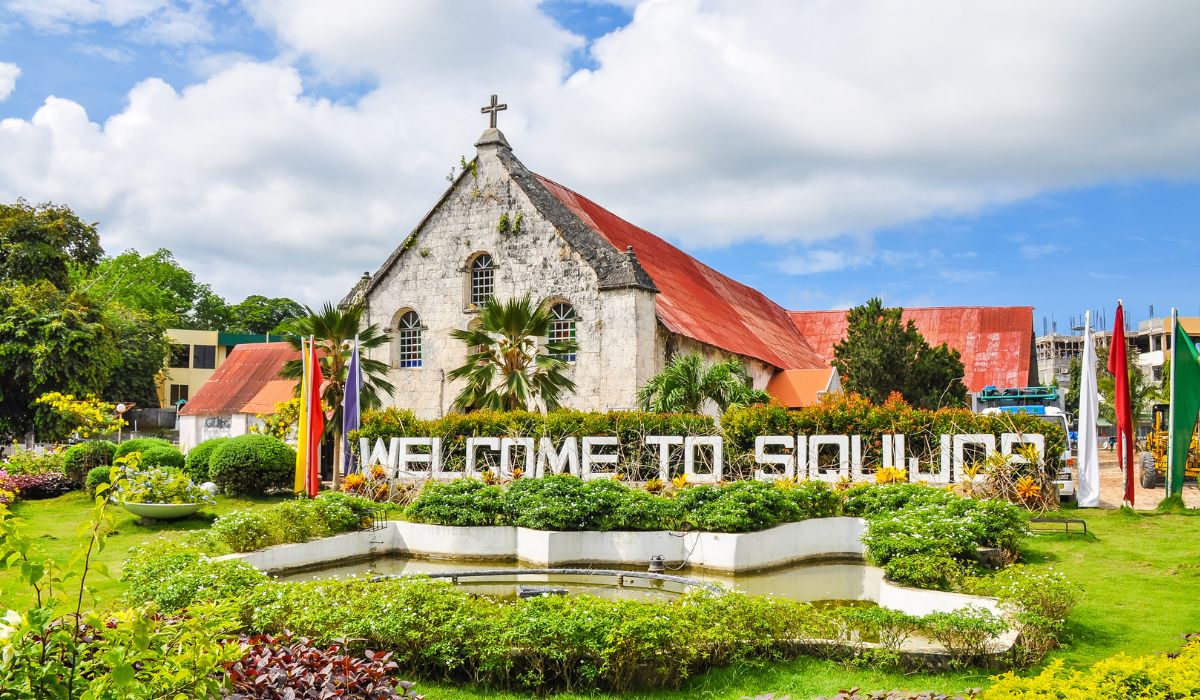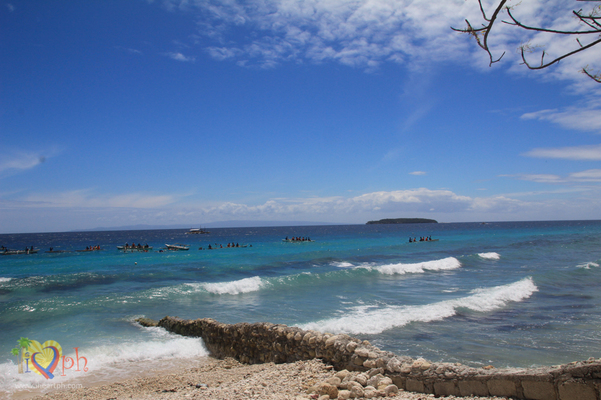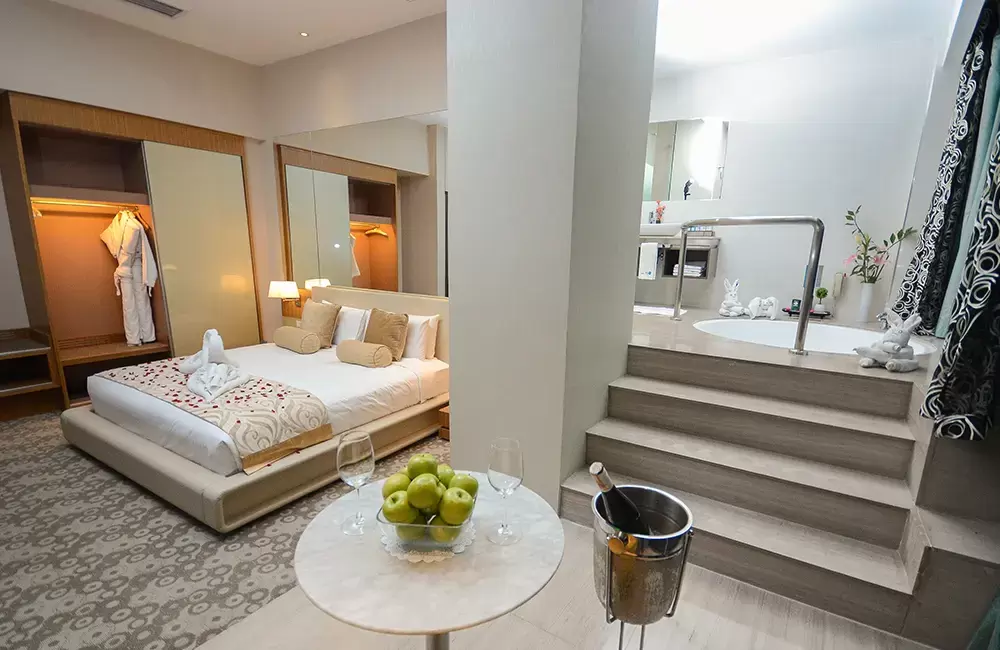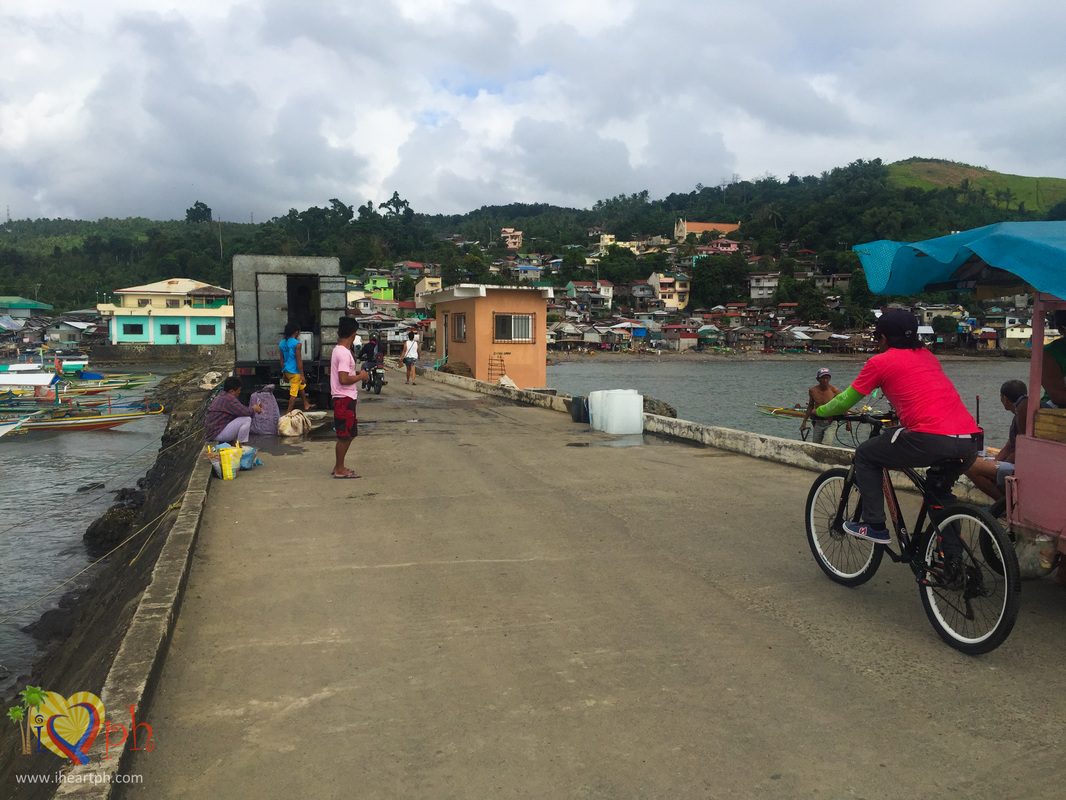Nestled on the island of Siquijor in the Philippines, the St. Francis of Assisi Church, commonly referred to as the Siquijor Church, stands as a testament to the faith and history of this island. This notable structure welcomes visitors with its serene atmosphere, offering a glimpse into the island’s rich cultural heritage.
In this article, we will talk about the historical and cultural significance of this sacred site as well as provide information for church goers and tourists.
If you are coming from Dumaguete City, you can book your Siquijor day trip here: Siquijor Heritage Day Trip
Where is St. Francis of Assisi Parish located?
As you set foot in Siquijor and as you leave the port, you’ll immediately see the St. Francis of Assisi Church, serving as the gateway to the island. To get here, you can just walk from the port or other parts of the town proper like the plaza, municipal hall and the public market. Since the church is at a walkable distance from the port, you can either visit the church during your arrival or departure.
Alternatively, you can also visit the church anytime during your tricycle tour. Their rate is around P1,000 to P1,500 for the entire island which will take almost the entire day.
We passed by the church on our way back to the port. The visit was quick since we only had a few minutes left before the departure of the boat heading back to Dumaguete. We only had time to have our pictures taken at the “Welcome to Siquijor” signage. We did not have the time to see the interior, sadly. Maybe on our next visit! ♥
Read more: Santa Maria Church in Maria, Siquijor
History
The St. Francis of Assisi Church has a storied past that dates back to the Spanish colonial era in the Philippines.
The island of Siquijor was first discovered by the Spaniards in the 16th century during their expeditions to the Philippines. The Augustinian Recollects were the first religious order to arrive on the island, and they initiated the Christianization of the local population.
Established by secular priests on February 1, 1783, the church’s administration was later transferred to the Recollects in 1793. The construction of the stone church, with its cruciform layout, was initiated by Fr. Setten and completed by Fr. Alonso de los Dolores between 1795 and 1831.
Over the years, it has undergone renovations and restorations to preserve its structural integrity and historical value. Despite these changes, it has retained much of its original charm and continues to be an important place of worship for the people of Siquijor.
About St. Francis of Assisi, the Patron Saint
St. Francis of Assisi, born Giovanni di Pietro di Bernardone, is one of the most venerated religious figures in the Catholic Church. He was born in the Italian town of Assisi around 1181 or 1182. After a youth spent in relative luxury and a stint as a soldier, Francis underwent a spiritual conversion that led him to renounce his family’s wealth and devote his life to God.
He is the founder of the Franciscan Order, established in 1209, and is known for his love of nature and animals, as well as his vow of poverty and dedication to serving the poor. St. Francis is often depicted with birds and animals, highlighting his belief that all creatures are brothers and sisters under God.
If you are coming from Dumaguete City, you can book your Siquijor day trip here: Siquijor Heritage Day Trip
St. Francis is also known for receiving the stigmata, the wounds of Christ, towards the end of his life, making him the first recorded person to bear such marks. His feast day is celebrated on October 4th, and he is the patron saint of animals, the environment, Italy, and merchants, among other things.
The choice of St. Francis of Assisi as the patron saint for the church in Siquijor reflects the island’s connection to nature and the environment, which is a significant aspect of the local culture and spirituality. The church not only serves as a place of worship but also as a reminder of the harmonious relationship between humans and the natural world, a principle that was deeply important to St. Francis himself.
Architecture
Constructed primarily from coral stone—a material abundant in the region—St. Francis of Assisi Church in Siquijor has thick walls that naturally cool the interior, a practical adaptation to the tropical climate. The facade is built of coral stones but unlike San Isidro Labrador, the stones used for the construction were white.

The interior is characterized by a warm and inviting atmosphere, with wooden pews and an ornately decorated altar that stands as the centerpiece of the space.
It has a barrel-vaulted ceiling, and the church is covered with red corrugated metal sheet roofing. The tricycle tour guide mentioned that the roof used to be made of nipa but has been renovated and tin was used instead.
Notably, the church features a technique known as tabique pampango, visible in the pediment of the baptistry.
Strategic placement of windows allows for natural light and ventilation, enhancing the serene ambiance. The design not only serves the functional needs of its congregation but also stands as a cultural landmark, reflecting the island’s historical narrative and the enduring spirit of its people.
The Belfry
The bell tower or belfry was curiously located a few meters from the main structure, unlike other churches where the bell towers are usually attached and connected to the main structure.
I have read in other blogs that it may have been used as a lookout for moro rebels and pirate invaders during the Spanish colonial era, which makes sense because it stood on higher ground. Given its elevated position, it provided a vantage point from which to observe the surrounding area, including the sea.
Historically, the belfry, like many others, served a practical purpose by housing bells. These bells were used to signal the time for worship, mark significant moments of the day such as noon or evening, and call the community together for important announcements or events. The sound of the bells, carrying across the island, was a central part of daily life in Siquijor.
If you are coming from Dumaguete City, you can book your Siquijor day trip here: Siquijor Heritage Day Trip
Today, the belfry stands as a symbol of resilience, offering panoramic views of the island and the sea beyond. Climbing its steps is like taking a journey through time, as each level reveals a different perspective of Siquijor’s breathtaking landscape.
Annual Feast
Every October 4th, the parish celebrates the feast day of St. Francis of Assisi with the Dilaab Festival, a vibrant expression of local faith and culture. “Dilaab” means “to blaze” in the local dialect, symbolizing the fervent faith of the Siquijodnons.
The festival is a colorful fusion of dance, music, and prayer, drawing visitors from across the globe to witness this unique expression of local heritage and devotion. This event is a focal point for the community, bringing together residents and visitors in a spirited celebration.
Mass Schedule and Opening Hours
For those planning to attend mass, here’s the weekly schedule:
- Monday: 6:00-7:00 AM
- Wednesday: 5:00-6:00 PM
- Thursday: 6:00-7:00 AM
- Friday: 6:00-7:00 AM (Only first Friday of the month), 5:00-6:00 PM (Other Fridays)
- Saturday: 6:00-7:00 AM
- Sunday: 6:00-7:00 AM, 8:00-9:00 AM, 5:00-6:00 PM
It’s best to reach out to the church for an updated schedule before your visit as the above might change without notice.
- Contact number: +63 997 598 3194
- Email: st.francisofassisisiquijor@gmail.com
- Facebook: www.facebook.com/stfrancisofassisiparishsiquijor








Leave a Reply